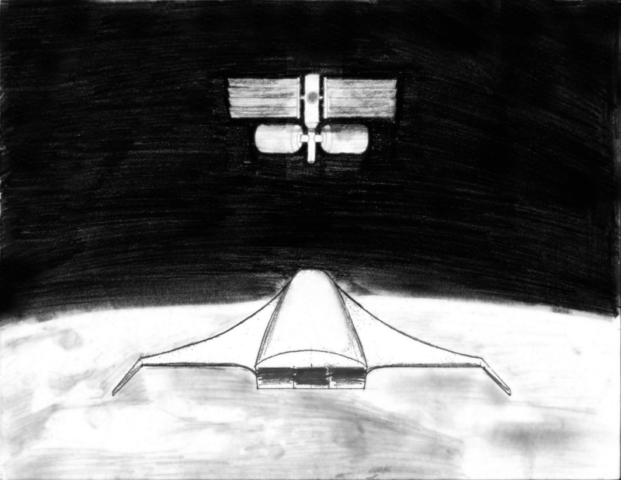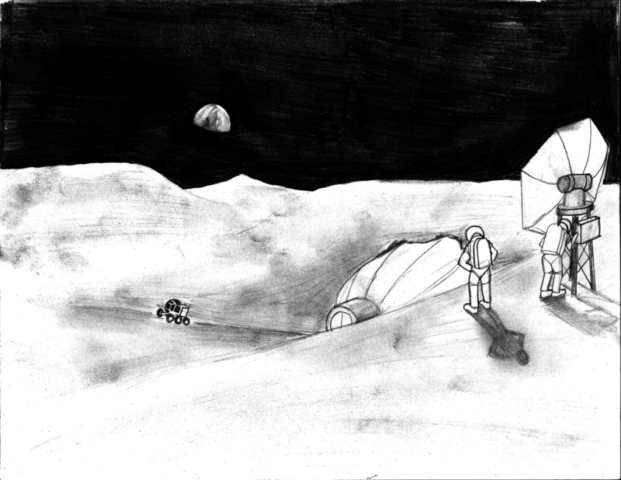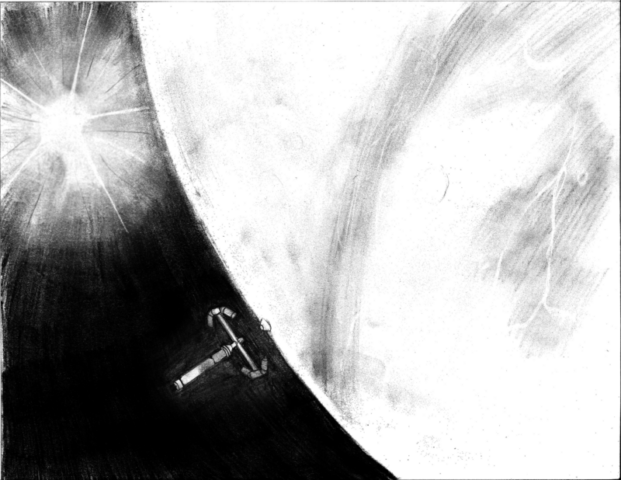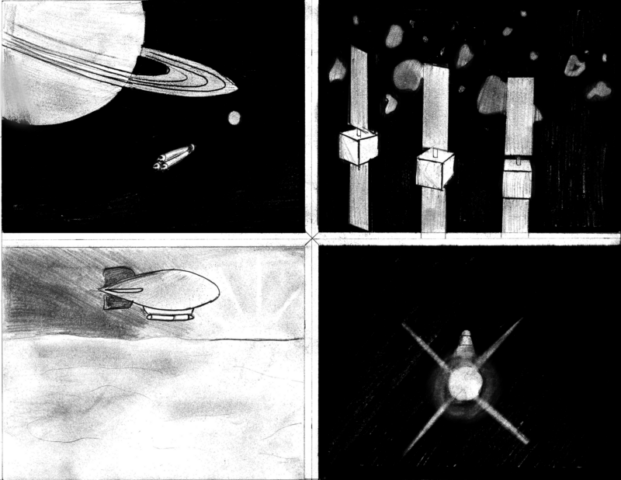It’s been a busy year so far here at Purdue’s School of Aeronautics and Astronautics, as 2019 marks not only the 150th anniversary of our university but also the 50th anniversary of the Apollo 11 moon landing (and the Apollo 12 moon landing, for that matter, though nobody seems to be mentioning that…). Yesterday, my friend and fellow Ph.D. student Justin and I had the opportunity to participate in an informal “Future of Aerospace” symposium, where we were challenged to showcase our visions for what the world of human spaceflight would look like fifty years from now, on the 100th anniversary of the first crewed moon landing (!) in 2069. The audience included NASA’s Associate Administrator for Human Exploration and Operations, Bill Gerstenmaier, and Dan Dumbacher, former Deputy Administrator for the same directorate and current Executive Director of AIAA, as well as several professors and students.
This was a really fun opportunity to think freely and creatively (i.e. to speculate wildly and without consequences) about the future and I thought that I would share the ideas which Justin and I came up with. We structured our presentation around five key technologies and five specific visions. Our technological themes were:
- Air-breathing rockets – A personal interest of mine, air-breathing rocket propulsion is a technology which seems to offer huge potential and yet has remained tantalizingly just out of reach for perhaps twenty or thirty years. Whether the best technology pathway is a rocket-based combined cycle design such as that proposed for the National Aerospace Plane (NASP) or NASA’s GTX single stage to orbit spaceraft or something even more exotic, like Reaction Engine’s SABRE liquid air cycle engine, the ability to utilize atmospheric oxygen as a primary or secondary oxidizer promises to revolutionize the way that we access space; it may also prove to be a viable propulsion system for hypersonic point-to-point transport.
- Disaggregated satellite systems – The ability to launch and control vast arrays of low-cost satellites (as opposed to the singular, monolithic architectures which have thus far dominated satellite design) will allow redistribution and democratization of on-orbit capabilities. Satellite owners will be able to rent out excess capacity on their constellations, and users on the ground will enjoy seamless, unfettered access to worldwide data services such as internet and GPS.
- Intelligent habitats & exploration systems – Increased autonomy of habitation modules and rovers will allow greater capabilities for deep space exploration which may not always sustain a human presence. The planned Lunar Orbital Platform-Gateway, for example, will likely be uncrewed for relatively long stretches of time (certainly during its early stages); the same will almost certainly be true for infrastructure needed for Mars exploration. It will thus be crucial that future space systems can self-monitor and ideally even self-maintain to ensure safety for astronauts and security for the investments we will make in these pieces of hardware.
- In-situ resource utilization – Establishing a human presence off-Earth will require some degree of self-sufficiency. The moon may be relatively accessible, but the same certainly can’t be said of Mars, meaning that astronauts will have to learn to use the resources they find on-planet to spend any significant length of time on the surface. This will likely take several forms – extracting breathable oxygen and combustible fuel from the atmosphere (for example, by the Sabatier process), harvesting water ice for human consumption, or even mining frozen helium isotopes to power nuclear reactors. More than just consumables, astronauts will likely have to use local materials to construct habitats (though I imagine the actual construction will be left to robots to complete).
- Nuclear rockets – While traditional chemical rockets are technically capable of accomplishing our immediate exploration goals on the Moon and Mars, they nonetheless leave much to be desired; the many months required for transit to Mars, for example, all but require a higher-performanc method of propulsion. Nuclear thermal rocket engines would enable astronauts to make the journey in a fraction of the time, minimizing exposure to cosmic and solar radiation as well as the risks of crew and equipment failure.
Our five “visions” represented different scenes that we felt would exist in 2069:
- Terra Firma – a world made more connected, more self-aware, and more efficient by the development of improved satellite services, hypersonic flight, space tourism, and Earth applications for advanced life-support systems and intelligent habitat technology.
- Low Earth Orbit – a dynamic and multifaceted domain of private and public space stations, running operations ranging from orbital pharmeutical manufacturing to space tourism, serviced by single-stage spacecraft providing regular crew and cargo transport.
- Cis-Lunar Space – a permanent human research facility analogous to the remote Earth-based facilities we currently operate on Antarctica, where scicentists regularly visit to carry out important research; an improved orbital gateway will simplify access to the lunar surface and commercial ventures may be starting to make inroads to moon operations.
- Mars – a more recent human triumph, where the architecture required for long-term human presence is still taking shape in the form of 3D printed habitats on the surface; crews of astronauts presently inhabit a rotating orbital station and make short excursions to the surface and the two moons of the Mars system.
- The Frontier – the next steps for space exploration after 2069, whether they take our crews to moons in the outer reaches of the solar system (Titan, Enceladus, Europa) or to the upper atmosphere of Venus (where airships could comfortably cruise), and whether they take swarms of robotic probes throughout the solar system, or take an uncrewed payload on our first true interstellar mission.
Overall, the opportunity to think daring thoughts about the future was thoroughly enjoyable, and the chance to present our ideas to two of the biggest names in human spaceflight was quite a privilege. The illustrations I did for our five “visions”, can be found below.





0 Comments